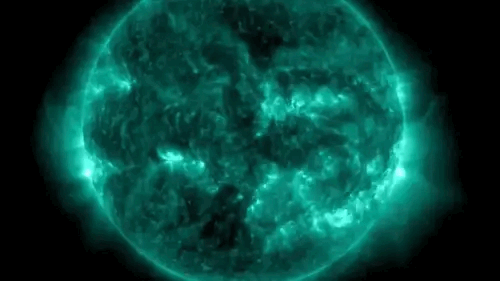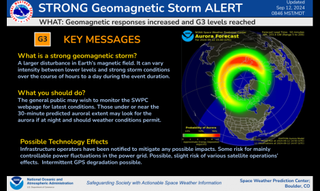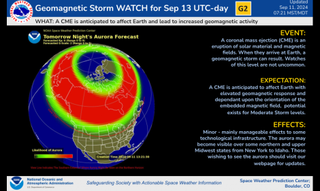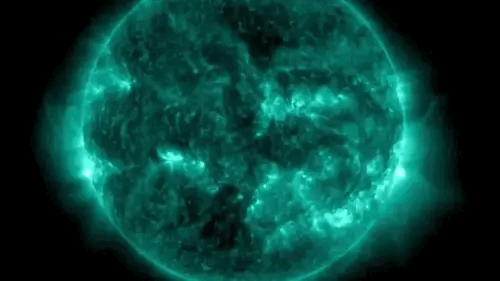A parade of solar activity continues to flow from the sun this week, opening up more chances to spot the aurora across the United States this weekend.
On Thursday morning (Sept. 12), a sunspot region that has not been numbered yet made its presence known blasting off a X1.3 class solar flare. X-class solar flares are the most powerful of their kind, and are typically followed by a full or partial loss of high frequency (HF) radio signals for sunlit locations on our planet. The energetic eruption, which peaked at 5:43 AM EDT (943 UTC), brought impacts earlier this morning with communication bands across Africa, Europe, and parts of Asia.
Forecasters at NOAA’s Space Weather Prediction Center will continue to analyze the data to confirm how many more CMEs could reach Earth’s magnetic field both from the X-class flare and also a group of M-class flares (the second strongest in class) also generated early Thursday by two previous sunspots, or Active Regions (AR), designated AR 3811 and AR 3814.

The National Oceanic and Atmospheric Administration’s (NOAA) Space Weather Prediction Center (SWPC) also reported that a geomagnetic storm occurred Thursday morning (Sept. 12) at 10:46 AM EDT (1446 UTC) at the G3 (Moderate) level. This is the third level on a scale of five.
The storm resulted from a coronal mass ejection (or CME), a blast of the sun’s plasma and magnetic field, that was fired off from a solar flare earlier this week on Sept. 10. The sun was already up across the eastern half of the United States at this time, but some locations further west were able to get a beautiful glimpse of resulting auroras in its wake.
What a surprise! The northern lights can be seen here in Elko this night due to a geomagnetic storm. For more information, head over to Space Weather Prediction Center https://t.co/S3ss6IKV3F and see when the next chance for the lights are. #nvwx pic.twitter.com/TMx4wsd0OzSeptember 12, 2024
When a sunspot region releases a solar flare, a CME propel away from the sun’s corona. When these are directed at the Earth, we experience the impacts days later.

In fact, aurora chasers will have another opportunity on Friday (Sept. 13) with another geomagnetic storm expected from a CME that began its journey away from the sun in the earlier part of the day on Tuesday (Sept. 10).

RELATED STORIES:
The SWPC has a Geomagnetic Storm Watch in place for Friday for the potential of another G2 (moderate) event that could bring a repeated chance to see the aurora, if the weather cooperates, for northern and upper Midwestern states stretching from Idaho to New York.
For those interested in the latest forecast, SWPC offers a 30-minute forecast and a forecast for both the current evening forecast and for the following day.



